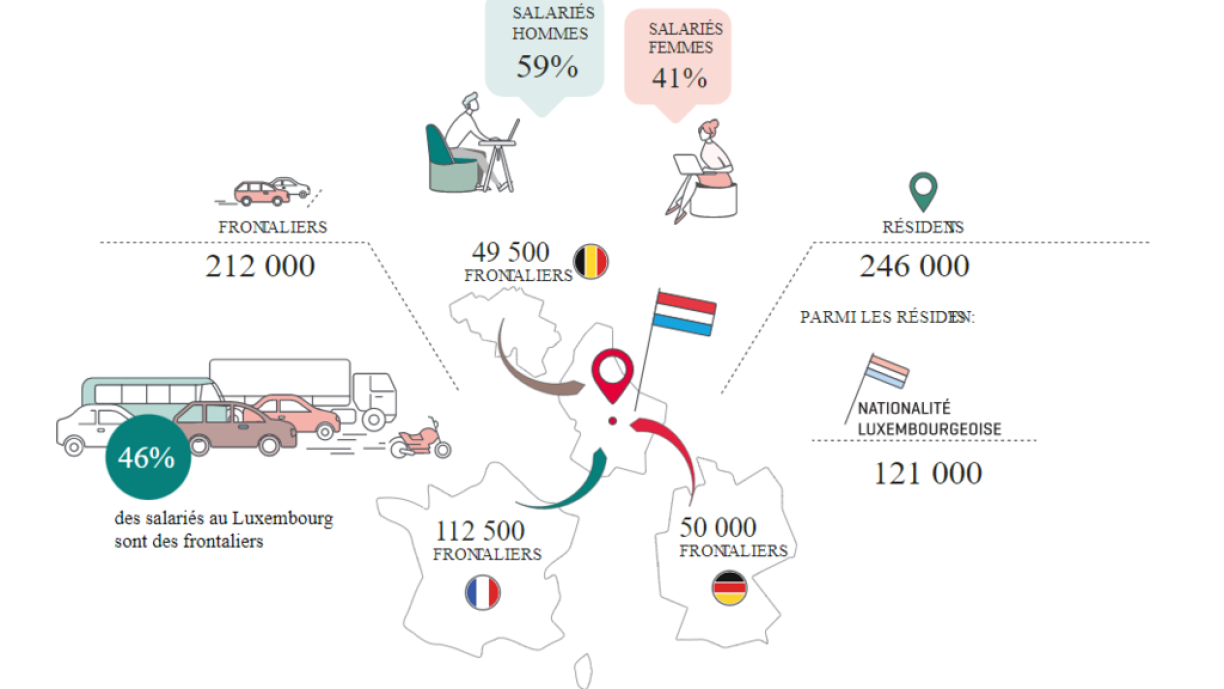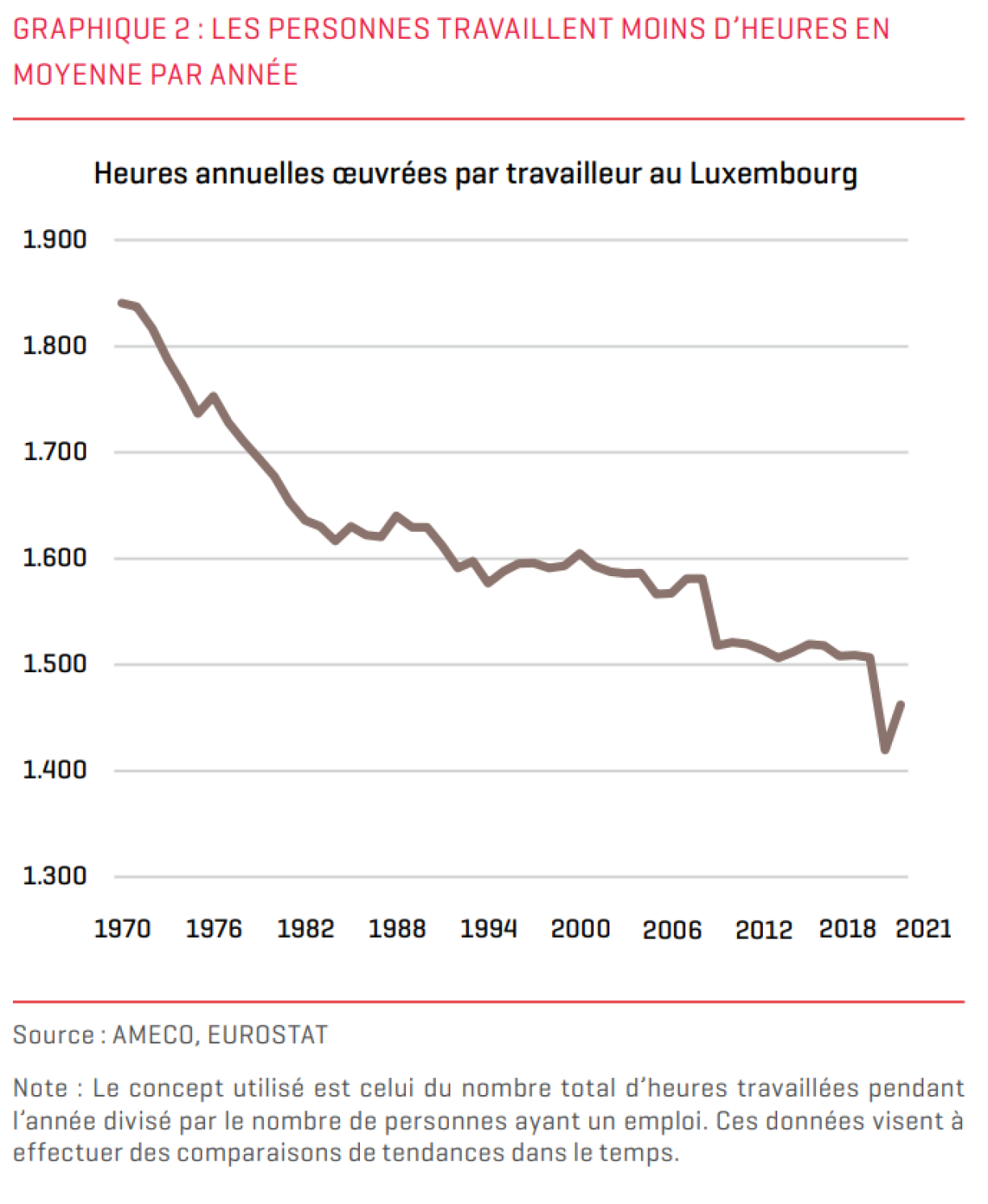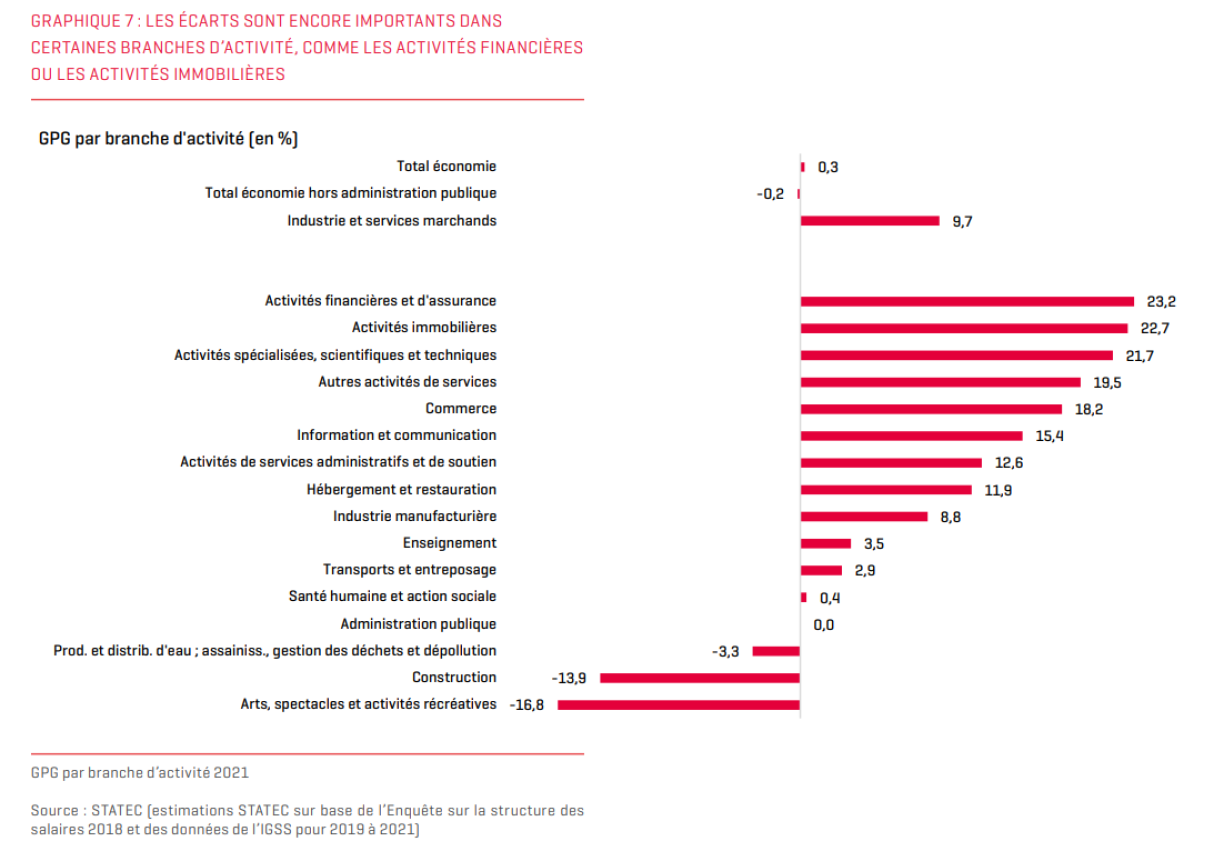
Half of the cross-border workers hailed from France, with a quarter from Germany and Belgium respectively. 59% were male, 41% female.
STATEC reported that, on average, working hours had decreased for employees in Luxembourg, dropping from 1,900 hours per year in 1970 to 1,530 hours in 2021. It should be noted that the 40-hour working week was introduced in 1975.

Around 40% of the workforce switched to working from home as a result of the coronavirus pandemic, dropping from 52% in 2020. In the final quarter of 2021 this number dropped to 38% as people returned to the workplace.
In terms of equal pay, the wage gap between men and women has dropped to virtually zero. Some 20 years ago, men earned around 19% on average when compared to women. However, today’s figure of 0.2% relates to the market as a whole, but varies in individual sectors.
The majority of roles are in the commerce sector, followed by transport and hospitality. In total, these industries account for around 100,000 jobs.
1 in 5 employees work for the government or for municipalities or other public services, which include education and healthcare. The finance and insurance industries are also considered big employers in the Grand Duchy.
More and more employees are turning to part-time work, with the number of part-time employees tripling over the last 40 years. Around 80% of these employees are female.
Around half of the workforce hold collective agreements, or contracts relating to trade unions. This figure increases to 100% of employees working for the State.
